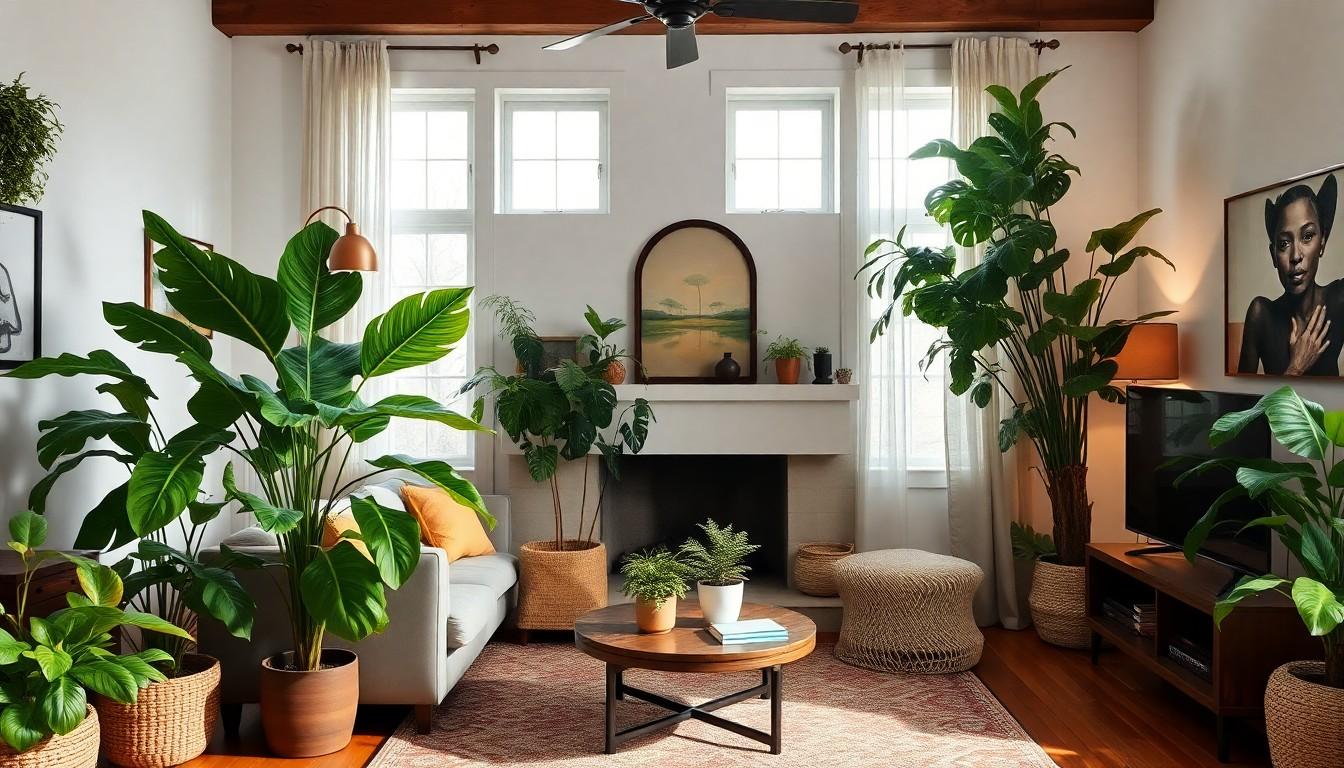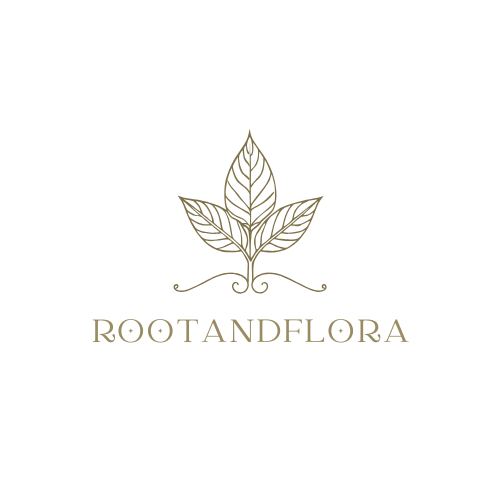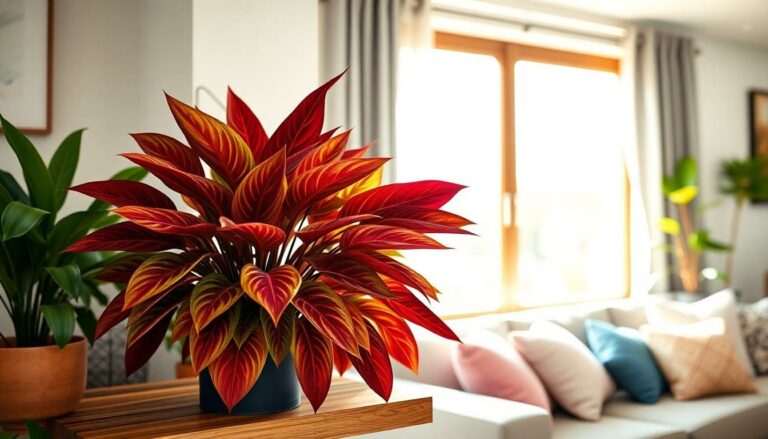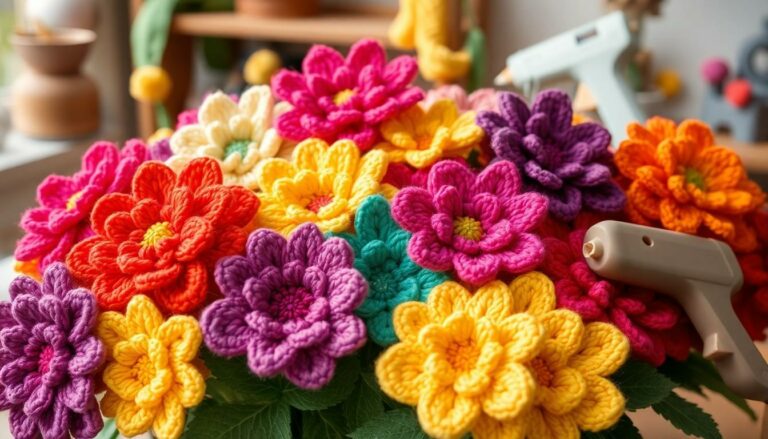Bringing large house plants into a home isn’t just a trend; it’s a lifestyle choice that transforms any space from drab to fab. Imagine towering greenery that not only purifies the air but also doubles as a conversation starter. Who wouldn’t want to impress guests with a majestic fiddle leaf fig or a striking monstera? It’s like having a mini jungle right in the living room, minus the mosquitoes.
Overview Of House Plants Large
Incorporating large house plants into interiors significantly elevates the overall aesthetic. Various species thrive in indoor settings, contributing both beauty and air purification. Fiddle leaf figs, known for their striking leaves, create instant focal points in living rooms. Monstera, with its unique split leaves, adds a tropical flair.
Large plants serve dual roles in home decor. They act as decorative elements while purifying the air and improving indoor air quality. Studies show that plants like spider plants and snake plants efficiently remove toxins from the air. Notably, these plants require minimal care, making them ideal for busy individuals.
Choosing the right large plant involves considering light conditions and space availability. Certain plants such as the rubber plant thrive in low light, while others like the palm flourish in brighter environments. Assessments of room dimensions help in selecting plants that fit perfectly without overwhelming the space.
Placement plays a crucial role in showcasing large house plants. Grouping plants together can create lush arrangements that mimic natural landscapes. Alternatively, positioning a single large plant in a corner brightens the area and draws attention.
Large house plants contribute to improved mental well-being. Research indicates that being around greenery reduces stress and enhances mood. Incorporating these plants transforms spaces into inviting retreats, reflecting a connection with nature.
Overall, large house plants offer vibrant solutions for modern decor. Their ability to enhance aesthetics while providing health benefits makes them a worthwhile addition to homes. Integrating these plants into living spaces creates a refreshing ambiance that promotes relaxation and enjoyment.
Benefits Of Large House Plants

Large house plants provide numerous advantages, enhancing both living spaces and overall well-being.
Improved Air Quality
Large house plants significantly improve indoor air quality. They remove harmful toxins like formaldehyde and benzene, making the air cleaner. Species such as rubber plants and snake plants excel at filtering air pollutants. Research indicates that homes with plants often have higher oxygen levels, promoting better health. Regularly nurturing these plants maximizes their air-purifying effects. Consequently, incorporating large house plants leads to a fresher, more breathable environment, benefiting everyone in the home.
Aesthetic Appeal
Large house plants enhance the aesthetic appeal of any room. A striking fiddle leaf fig or a lush monstera can serve as a stunning focal point. They add texture and color, transforming ordinary spaces into vibrant retreats. Pairing various large plants creates a dynamic visual interest that draws attention. Additionally, their presence increases the natural warmth, making areas feel inviting. Thoughtfully placed, these plants elevate home décor, offering both beauty and a sense of tranquility.
Popular Types Of Large House Plants
Large house plants add character and beauty to any living space. They also offer air purification benefits.
Fiddle Leaf Fig
Fiddle leaf figs stand out with their large, glossy leaves. These plants thrive in bright, indirect light, making them perfect for well-lit areas. Growth may be stunted with low light, so placement is crucial. Regular watering is necessary, allowing the top inch of soil to dry out between waterings. Popular for their sculptural shape, they create striking focal points in homes.
Rubber Plant
Rubber plants are known for their thick, dark green leaves. These plants adapt well to various light conditions, from low light to bright indirect light. Watering should occur when the topsoil feels dry, promoting healthy growth. Known for their air-purifying qualities, rubber plants filter indoor toxins. They grow tall and bushy, making them ideal for filling empty corners or adding height to arrangements.
Monstera Deliciosa
Monstera deliciosa captivates with its unique split leaves. This tropical plant thrives in bright, indirect light but can tolerate lower light levels. Watering should take place when the soil is partially dry to the touch. Monstera adds an exotic flair to any room, creating a vibrant atmosphere. Its rapid growth may require repotting every couple of years, allowing for further expansion.
Care Tips For Large House Plants
Caring for large house plants involves meeting their specific needs to thrive indoors. Understanding their requirements contributes to robust growth and enhances the overall aesthetic.
Light Requirements
Bright, indirect light benefits many large house plants. Fiddle leaf figs thrive in such conditions, while rubber plants adapt effectively to various light levels. Monstera deliciosa does best in bright spots but tolerates lower light. Ensure that large plants receive adequate light to avoid leggy growth or leaf drop. Placing plants near east or west-facing windows often yields optimal results. While some species like snake plants can survive in low light, vibrant foliage and healthy growth stem from sufficient light exposure.
Watering Guidelines
Watering practices play a crucial role in the health of large house plants. Overwatering commonly leads to root rot, a significant issue in house plant care. To prevent this, allow the top inch of soil to dry out before watering. Checking moisture levels can ensure proper hydration. During active growing seasons, typically spring and summer, plants may need more frequent watering. Conversely, reduce watering in the fall and winter months when growth slows. Each plant species requires different water frequencies, so always consider individual characteristics for best results.
Conclusion
Large house plants are more than just decorative elements; they bring life and vitality to any space. Their ability to purify the air while enhancing aesthetics makes them a valuable addition to modern homes. With various options available, from the striking fiddle leaf fig to the adaptable rubber plant, individuals can find the perfect fit for their environment.
Proper care and placement can maximize their benefits, creating a lush atmosphere that promotes relaxation and well-being. Embracing large house plants not only transforms interiors but also fosters a healthier living space, making them an essential choice for anyone looking to elevate their home decor.




